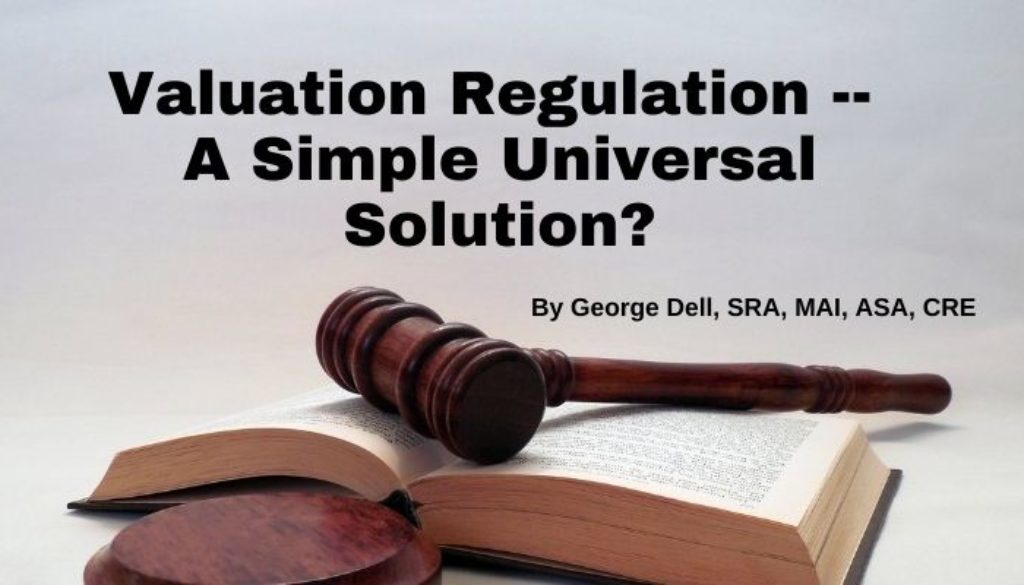This post starts the last in our series on the “five frictions” of valuation reform.
The question we ask : Is there a simple single solution to our convoluted regulation of a simple product?
We have considered that government regulation is a significant friction — holding back scientific and practical progress. We identified the only real goals to be the public trust and fair housing.
We have seen how each of these frictions — interacting on each other — obstruct needed change.
We have identified the resulting inconsistencies, bent for bias, and entrenched inertia of our current system. In particular how the regulation of financial entities itself freezes change in valuation functions. Finally, we noted that collateral assurance is archaic in its present “point value” insistence, where the real need is reproducible, auditable, analytics providing a risk/reliability distribution or score.
Most importantly, we have discovered that only a significant and sweeping reform of government regulation can save us.
Regulations must be fair, not favor one industry over another, and not perpetuate any possible bias.
To this end, we note that all valuation industries and methods follow the same identical process:
- Identify the problem;
- Select the relevant data;
- Apply predictives (adjust);
- Deliver/explain the results.
In each case, the only difference, at each step, is how it is done and by whom.
Who makes the need decisions? Is it a computer programmer, an agent, or field data collector, or licensed property appraiser?
- Is this model right for this property?
- What is the right collection of data?
- Which approach is mostly relevant?
- Does the user require other results?
Each process, each level, requires some human judgment. The judgment may come from the lender agent, the original programmer, an unlicensed valuer, or a licensed appraiser.
For example: An AVM assumes the property is a single-family residence. The decision is made by the lender. (Who may choose between a single model, or a variety of ‘cascade’ models.) A programmer sets the search parameters, the selection of predictors (elements of comparison), the predictive algorithms, and a level at which the model ‘disqualifies’ itself. (The ‘hit’ rate.) Finally, the AVM may provide a ‘forecast standard deviation’, or confidence score. (Always proprietary — not universal.)
The question begs itself. If the analysis is the same, why are different methods regulated differently?
Is it reasonable that the “gold standard” (appraisal) is taxed, fee’d and licensed, and required to have ethical and performance standards – while others do not?!
Most of all. If the process to get accurate results requires the same four steps, is it possible that the standard and regulatory requirements should be the same?
Next week, we consider how UVRS (Universal Valuation Reliability Standards) may apply to all valuation ‘industries’ – Each of which provide the same product: market price (value) prediction.

Appraisal Opinion vs Analytic Results? - George Dell, SRA, MAI, ASA, CRE
June 7, 2023 @ 1:16 am
[…] policy and the regulatory function can be considerably simplified. EBV enables counter-cyclical policy and explicit recognition of […]